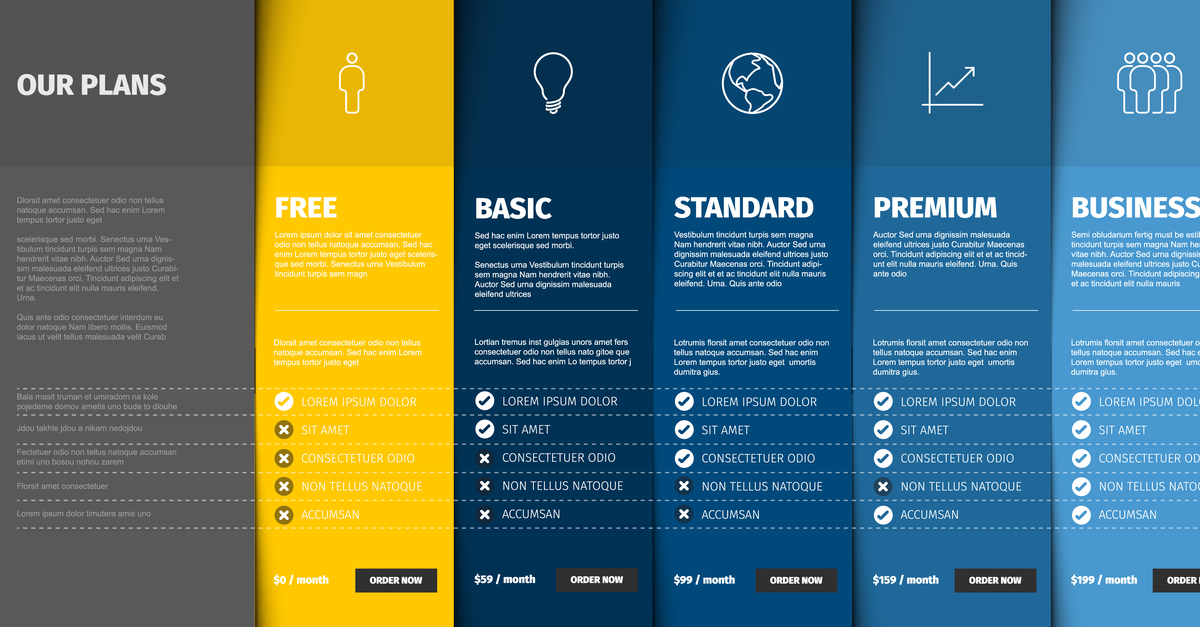


If you're a marketer, setting the price is an important activity to get involved in. It can enable you to increase profit, boost revenues and enhance your reputation So how do you set the price of a training course? As a result of reading this article, you'll discover how - and I hope you'll understand why pricing could be your marketing superpower. As both an in-house marketer, and now helping my training clients, I've seen the positive effects that good pricing has for a training business. For any marketer, taking the initiative on pricing is a great way to build your commercial reputation.
'Price is what you pay. Value is what you get', said the American business magnate Warren Buffett. What value does your training course provide? A good way to do this is a complete this value proposition canvas to help you better understand the gain creators and pain relievers your training service provides. It's important to remember that value is subjective, and that the same learning service can provide a different value for different clients.
When determining value, consider the extent to which your training is nice-to-have, rather than a must-have. Can you clearly demonstrate that your training will improve performance, enable career progression, increase revenues, or ensure compliance? Is this backed up by customer feedback?
And what about competitors - how do their prices compare? Getting the answers to these questions helps you build a case for deciding the right prices for your training services. I also recommend asking how pricing in your organisation has been decided in the past. When was it last reviewed? Who was involved? What was it based on? What were the results?
The best answer can be found in this classic Harvard Business Review article:
“... a 1 per cent improvement in price, assuming no loss of volume, increases operating profit by 11.1 per cent. Improvements in price typically have three to four times the effect on profitability as proportionate increases in volume.”
In short, when you set the price of a training course well, this could lead to increased revenues, and potentially without adding material costs. But for many years, many training businesses based pricing on a rather archaic cost-plus formula. This would typically be calculated by adding up the venue, trainer, and other costs, and adding on a 20 per cent profit margin to achieve your price. This has two drawbacks. Firstly, it often ignored other costs such as overheads, meaning the profit assumption was often incorrect. Secondly, it ignored the value of the service. In recent years we've seen a dramatic shift to digital learning services, which makes cost plus even more problematic. This offers both opportunities and challenges in pricing.
 Can you replace cost-plus pricing with value-based pricing? The answer partly depends on your competitors. For example, if they offer identical products then your customers are likely to be much more price-sensitive.
Can you replace cost-plus pricing with value-based pricing? The answer partly depends on your competitors. For example, if they offer identical products then your customers are likely to be much more price-sensitive.
Indeed a lack of differentiation can lead to commoditization and churn which leads to price discounting. I’ve seen this happen with face-to-face courses being undercut by digital course providers. So what can you charge compared to your competitors?
Having a great product that is valued by customers over your competitors is obviously important. This enables you to be a price-maker rather than a price-taker. Value-based pricing is predicated on you being able to measure and differentiate the value of your service over your competitors.
So talk to customers to find out the impact your training and elearning are having. By differentiating your outcomes from competitors and understanding the true value of your learning services, you’re better placed to set a price based on value.
 How else can you be confident that the price you have set is correct? One way to do this is through price testing. Asking trusted friends in your market can help you get a good sense of whether your price will likely encourage or deter customers from buying your learning service.
How else can you be confident that the price you have set is correct? One way to do this is through price testing. Asking trusted friends in your market can help you get a good sense of whether your price will likely encourage or deter customers from buying your learning service.
Asking customer-facing colleagues about prices can be also helpful, but should not be relied upon exclusively as there may be bias in their thinking. Discrete price promotions for particular segments can help you estimate how much of your market will likely buy at a particular price. Once you have set a price you may wish to review it from time to time. Again, discrete promotions can enable you to test price changes, for example to a particular renewal segment.
If your target market includes large teams in large companies, an enterprise model for pricing may offer a great opportunity. Here, you sell a multi-seat licence rather than an individual one. This, in turn, could help you achieve recurring revenues from subscriptions or memberships.
The key here is to consider the perceived value for your customer. For example, a multi-seat licence that provides online access for 50 employees, but for the price of 30 individual licences, offers better value to the client, whilst increasing your revenues.
To do this you will need to identify and work with senior decision-makers at your prospects. This may require a longer-term approach to sales. It also involves transforming the relationship from one that is transactional to a partnership. This requires a deep understanding of your customer's desired learning and performance outcomes and a training service that can be shown to improve them.
I'm often asked if training prices should be displayed on client websites. The apparent argument for not doing so is often due to an inconsistent discounting legacy.  Understanding these issues is obviously important before you decide on publishing your pricing. Generally, I find that customers prefer transparent pricing, and that should also be an important consideration.
Understanding these issues is obviously important before you decide on publishing your pricing. Generally, I find that customers prefer transparent pricing, and that should also be an important consideration.
Should you decide to publish your prices, make sure you present them clearly on your website. SaaS companies have led the way with this, often providing a grid of features and benefits, often with 'good, better, best options. Often the 'better price' is your 'Goldilocks' price because it's 'just right'. Here are some examples that you might find helpful:
Semrush: This example includes three easy-to-understand options. with further information for prospects wanting more in-depth comparisons:
WordPress: Each option has a CTA button, with one labelled 'popular' to guide the prospect. This example compares each pricing bundle, with those features not included helpfully greyed out with a cross.
Marketo: This includes a helpful summary statement and a list of features, all neatly laid out for easy comparison.
What about learning services? I like this example from FutureLearn - the simplicity of a simple monthly price reduces the mental effort in making a decision.
This pricing page by Smart Insights provides clear choices about which option to select.
My recommendation is for you to participate in pricing conversations and better still lead them. Too often, marketers end up managing just promotion and miss the opportunity to influence the other ‘p’s of marketing. It’s good for you to have an opinion about pricing for your elearning and training services. It's much better to do something about it.
For monthly tips on growing your training services subscribe to our regular email newsletter The L&D Marketing Monthly.
 Doug Marshall
Doug Marshall
MD, Achieve B2B Marketing

At Achieve B2B Marketing we’ll ask you where you want to get to and discover the best way to get there. Book an appointment with Achieve B2B Marketing today.
Call: 07961 127655

Thanks to everyone who's been part of Achieve B2B Marketing, especially our amazing clients and partners, The business is no longer active as our founder Doug Marshall has moved to an in-house role.
The website will remain up for a while, however, it's no longer being updated.